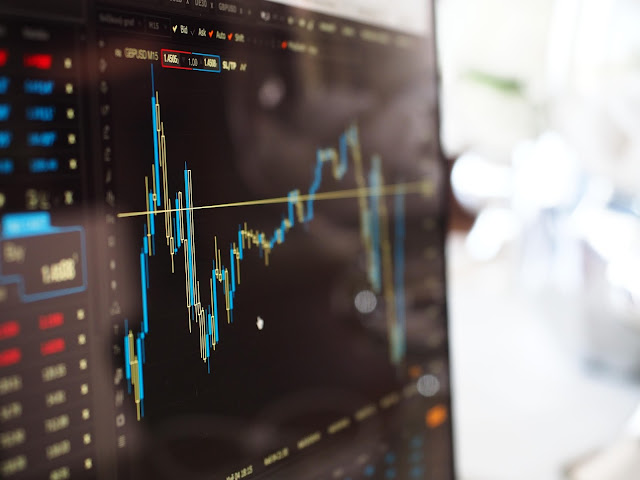It all depends on how you look at it ..... andif you look at it this way, inflation's already up and running. ref :- "Short View" by Robin Wigglesworth, The Financial Times, Companies and Markets
There are any number of measures of inflation ..... most obviously
the Consumer Price Index (CPI) and its close relative the Core Consumer Price
Index, which removes those highly volatile elements of food and energy prices
and is generally considered to be more accurate, even if headline CPI often
grabs ..... well, more of the headlines.
The Fed's preferred measure of inflation is the change in the Core
Personal Consumption Expenditures Price Index, known as PCE for short (thank
God !) . All of these tools show that despite healthy GDP growth, super-low
unemployment and historically-speaking still very benign monetary conditions,
inflation stubbornly remains around the 1.3 - 1.4% area, well below the Fed's
optimum target of 2.0%.
We often comment on the debate going on between those that believe
that the fundamental dynamics that drive inflation been changed by a
combination of technology, globalisation and demographics on the one hand, and
those that argue that the old truths will soon reassert themselves on the
other. But now there's a new measure of inflation pioneered by the New York
Fed -- the Underlying Inflation Gauge (UIG) -- and
already it's throwing up some thought-provoking results..
In essence, UIG goes beyond mere price-checking to also
incorporate things like labour and financial conditions. In doing so, it aims
to see through temporary blips and identify "Trend Inflation"
-- which theoretically one might argue is a more useful tool for
economic and financial decision-makers, including central banks.
Anyway, this new measure gave a reading of 2.8% in September, an
11yr high if you examine historical data and well above the Fed's inflation
target. If you have any faith in the UIG (and Bank of America has said that it
does have some predictive power), that number should probably be a cause for
concern already. What's more, it's worryingly close to the 3% level that
Mr Wigglesworth tells us is a "toggle-switch" for Wall Street (for
the practicality-impaired, that's just a simple lever-operated electronic
switch, apparently).
The theory has it that rising prices reflected by inflation rates
up to 3% are conducive to rising stock market valuations. But for every single
percentage point above 3%, US price-to-earnings multiples fall by 2.69 points.
The effects are even more damaging to bond prices, which obviously trade
inversely to bond yields. For every percentage point rise in inflation UP TO
3%, bond yields rise by 88 basis points...... BUT, for every percentage point
rise ABOVE 3%, bond yields accelerate higher by 150 basis points.
So says the historical data, and it's only reasonable to assume
that given the hugely high valuations of financial assets right now, one might
expect the effects of a sudden spurt in inflation (which UIG indicates is
already on the cards) to be even more extreme.
UIG is a brand new toy, and it will take some time for it to gain
credibility (assuming that it does at some point). But it might be a good idea
to keep half an eye on it, and on how many others are doing the same.
The BoE's rate hike ..... again.
ref : "BoE lifts rates for first time in a decade and signals
more to come", front page in the Financial Times,
and
"Investors take BoE move as dovish
hike," also in the Financial Times, Markets and Investing
A restless night, and there are few better ways of getting back to
sleep than staring at the financial news at some ungodly hour of the morning.
But not if the FT's front page shouts out an entirely different message to one
you put out little more than 12 hours earlier.
The article seemed to say that the main lesson from Governor
Carney's words was that more rate rises were in the pipeline. As you'll know,
that wasn't the intimation that we took from the day's events, and certainly
wasn't the one that markets did either, with Sterling and Gilt yields on the
slide. Had we misinterpreted things entirely ? Had the markets changed their
minds without us noticing ?
Fortunately, another article in the same organ which takes a view
more akin to our own provided some comfort, and the knowledge that the markets
had NOT suddenly done a U-turn restored the chances of some shut-eye. GBP / USD
was still below $1.31, and Gilt yields hadn't bounced after dropping 8 bp
yesterday. There's nothing wrong with having opposing views presented in the
same media outlet of course, although it can occasionally be bit awkward if the
authors are both on your staff rather than contributors. It does however
illustrate vividly that there are still two viable stories about what the
future holds, even if one can't escape the impression that one is more viable
than the other.
We are absolutely certain that in an ideal world, the BoE would
love to embark on a gentle tightening cycle, not least to normalise
rates so that they have some ammunition up their sleeve if and when they feel
the need to ease policy again in the future. Equally, if over-the top inflation
readings fail to subside, another hike is a possibility.
But that's not the majority view of how things will pan out, with
many of the view that even yesterday's 1/4 point rise was an error. The
consensus view seems to be that inflation, being caused by a fall in Sterling
rather than domestic demand, will back off, and that a stuttering UK economy
facing enormous Brexit uncertainty needs a series of rate hikes like a hole in
the head.
It's just a view of course, consensus or not.



No comments